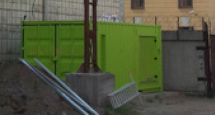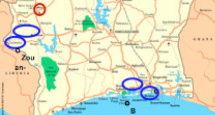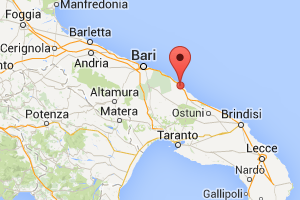[rev_slider slider11]
 Cor-Ten STEEL: Characteristics and Applications
Cor-Ten STEEL: Characteristics and Applications

Cor-Ten steel is an easy-to-use material for various solutions, from architecture to the use of structural elements and furnishing elements.
Low-alloy steel (the elements that compose it do not exceed 5%), high-strength and self-passivating, defined as “patinabile” (weathering steel), patented in 1933 by the American United States Steel Corporation.
Its characteristic chromatism and its high mechanical performance make patinable steel one of the materials most used by contemporary architects. Its success is due precisely to the two main characteristics that distinguish it: high resistance, both mechanical and corrosion, and the peculiar aesthetic qualities given by controlled oxidation.
The name Cor-Ten comes from the English CORrosion resistance + TENsile strength.
Thanks to the alloying elements, which contribute to the formation of a permanent and self-regenerating protective surface patina with a typical brown colour, Corten steel in fact adds to the mechanical resistance an exceptionally high resistance to corrosion from exposure to atmospheric agents, up to 8 times greater than normal structural steel.
Corten sheet metal allows you to avoid galvanizing costs and, if painted, corten steel sheets reduce maintenance costs to a minimum, because being made of high-strength steel they self-protect from corrosion in correspondence with scratches and chips in the layer of paint.
There are three variations of Corten steel, each with specific characteristics and relating to fields of use:
- Type A Corten or phosphorus Corten: used in architectural applications, it stands out for its resistance to atmospheric agents up to 8 times greater than that of carbon steel;
- Type B Corten or Vanadium Corten: ideal for use in structures subjected to strong stress, it offers resistance to atmospheric agents approximately 4 times higher than that of carbon steel;
- Type C Corten: similar characteristics to Vanadium Corten, it is usually used for highly stressed structures.
The structural characteristics of Corten metal make it one of the most suitable materials for the construction of fences and fences in different creations, including: parapets, delimitation of urban parks, public gardens, cycle paths, riding stables and other contexts.
All use situations in which the aesthetic and functional characteristics of Corten integrate well with the environment, which at the same time guarantees low costs for the creation of the products, environmental sustainability and long resistance over time.
Advantages

The warm and elegant brown colour, given to it by the oxidative patina, allows Corten to fit harmoniously into the surrounding environment, both in urban and extra-urban contexts.
Corten steel is particularly versatile and lends itself to numerous applications, thanks to the combination of resistance and long life. Corten sheets can be easily worked, perforated and finished with different patterns, to create ever new architectural shapes.
- It has a lower cost than normal steels because, with the same mechanical resistance, it is possible to achieve reductions in thickness and consequent reductions in weight
- Excellent structural resistance and atmospheric corrosion, which allows Cor-Ten to be used even in its original state, as it does not deteriorate with the passage of time, but on the contrary obtains a worn appearance
- Minimal maintenance and cleaning because it does not break or deteriorate; taking into account the conditions necessary for the formation of oxidation
- It lends itself to different processes: forging, bending, drawing, laser cutting, welding, making it extraordinarily versatile
- Absolute non-deformability over time
- Corten steel can be 100% recycled without losing any properties. It makes galvanizing and painting operations, which have a significant environmental impact, superfluous.
- Suitable for many applications: cycle paths, parks, gardens, public and private properties, road overpasses, riding stables, etc.

ELETTRIFICAZIONE DI CASE E VILLAGGI
HyREI è in grado di alimentare diversi edifici, un villaggio o anche una piccola città e molto spesso rappresenta il modo più conveniente, in termini costi-benefici, di produrre energia
elettrica.

POMPAGGIO E TRATTAMENTO ACQUE
In molte zone non raggiunte dalla rete elettrica HyREI è il sistema ideale per l’approvvigionamento di acqua inquanto alimenta il pompaggio e/o il processo di purificazione.

ILLUMINAZIONE STRADALE
Durante il giorno HyREI converte l’energia solare in energia elettrica, di notte le batterie rilasciano l’energia elettrica accumulata per alimentare particolari sistemi di Led luminosi idonei per l’illuminazione stradale.

ANTENNE E TELECOMUNICAZIONI
HyREI trova applicazione anche per l’alimentazione di trasmettitori e ripetitori per la telefonia mobile.












